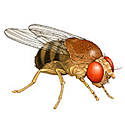Featured Paper of the Month – July 2025
Published in Journal of Clinical Investigation by Mehdi Farokhnia and Lorenzo Leggio of the NIDA IRP Clinical Psychoneuroendocrinology and Neuropsychopharmacology Section.
In this study, we investigated the associations between the receipt of GLP-1RAs and change in alcohol use, using real-world electronic health record data from the largest integrated healthcare system in the U.S., the Department of Veterans Affairs (VA).










